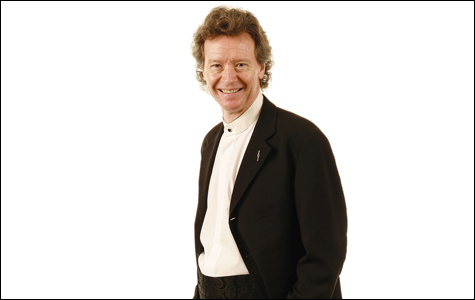|

Harry Christophers
|
The Handel and Haydn Society’s “Royal Fireworks” program last weekend was meant to mark the season’s first appearance of H&H artistic adviser Roger Norrington on the podium, but then Norrington’s main gig, the Stuttgart Radio Symphony Orchestra, landed a major Japanese tour, and, well, that’s what happens in this age of multi-tasking celebrity conductors. Stepping in for Sir Roger (who’s still scheduled to lead the Haydn program that will conclude the H&H season April 4 and 6) was Harry Christophers, who had made his H&H debut in December with the society’s annual Messiah. The program changed slightly: Handel’s Royal Fireworks Music and music from Purcell’s The Fairy Queen, as announced; Bach’s Overture No. 3 instead of No. 4; the G-major suite from Handel’s Water Music instead of a suite from Rameau’s Les Boréades.
It made for an unusually short evening — Friday the music ended at 9:35 — but that was the only cause for complaint. Christophers, the founder and leader of the distinguished English a cappella group the Sixteen (try their recording of John Taverner’s Missa Gloria Tibi Trinitas), created an intimate atmosphere — not easy in Symphony Hall — by having most of his 30 or so musicians stand (only the three cellists and the harpsichordist and theorbo player sat) and by conducting not only without a baton but from the floor, with no podium. The result was bracing rather than boring Baroque, with lilt and flow and point. Christophers prowled the floor like a big cat, coiling and uncoiling, scrunching his shoulders, shimmying, strutting, making big phrases with his hands that drew big phrases from the orchestra. The Water Music suite, with Christopher Krueger on Baroque flute, was shaped by contrasts in texture and volume. The opening of the Bach Overture was ceremonial and yet kept moving forward in its dance pulse; the Air (the so-called “Air on the G-String”) reveled in the firm, lucid bottom of the cellos and the bass. The period brass had their share of bobbles, and the deep bray of Douglas Yeo’s serpent got lost in Paul Pitts’s side drum at the beginning of the Royal Fireworks Music, but there was a Baroque bonanza — modern instruments never sound like this — in the serene interchange between trumpets and horns that followed. Even the concluding Réjouissance movement stomped, a four-on-the-floor Irish reel.